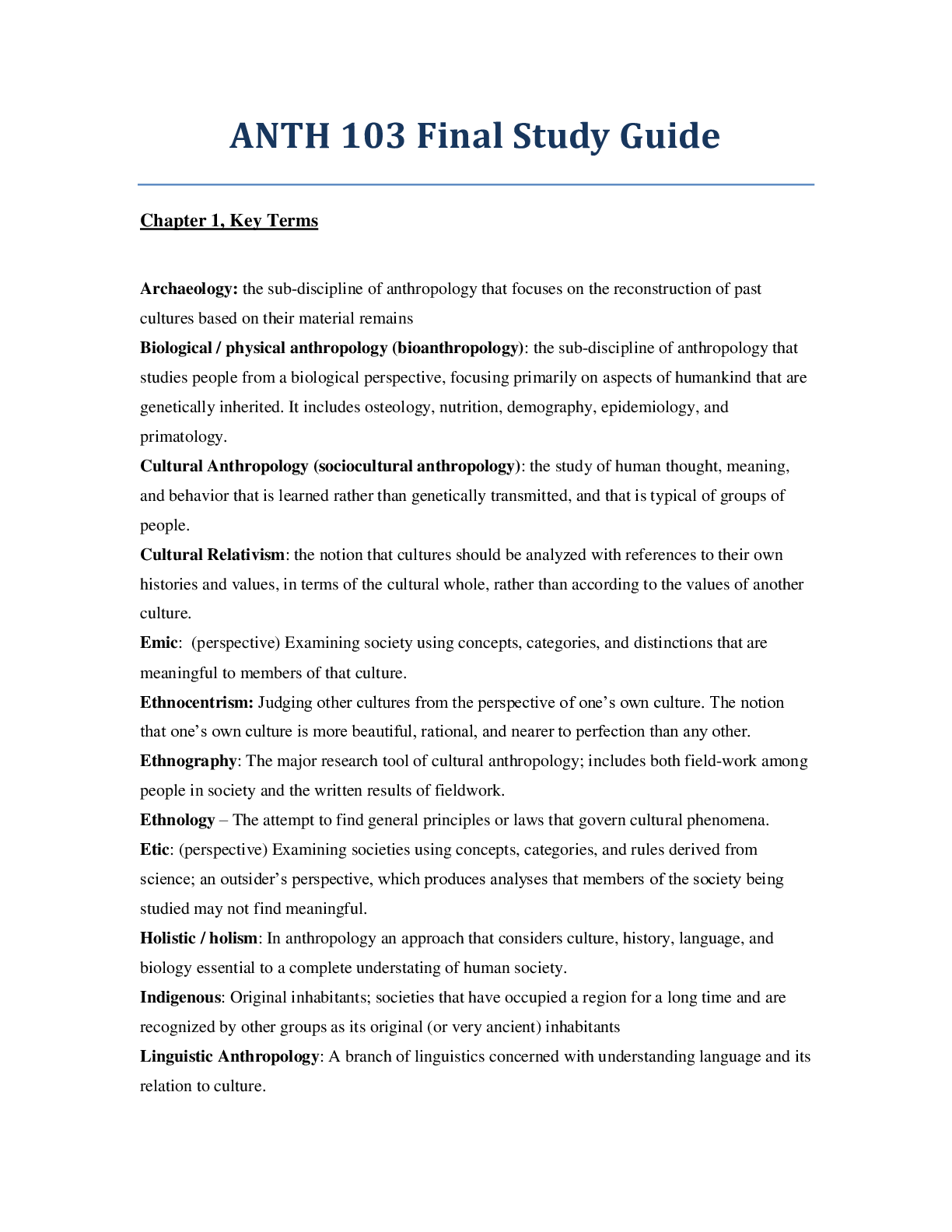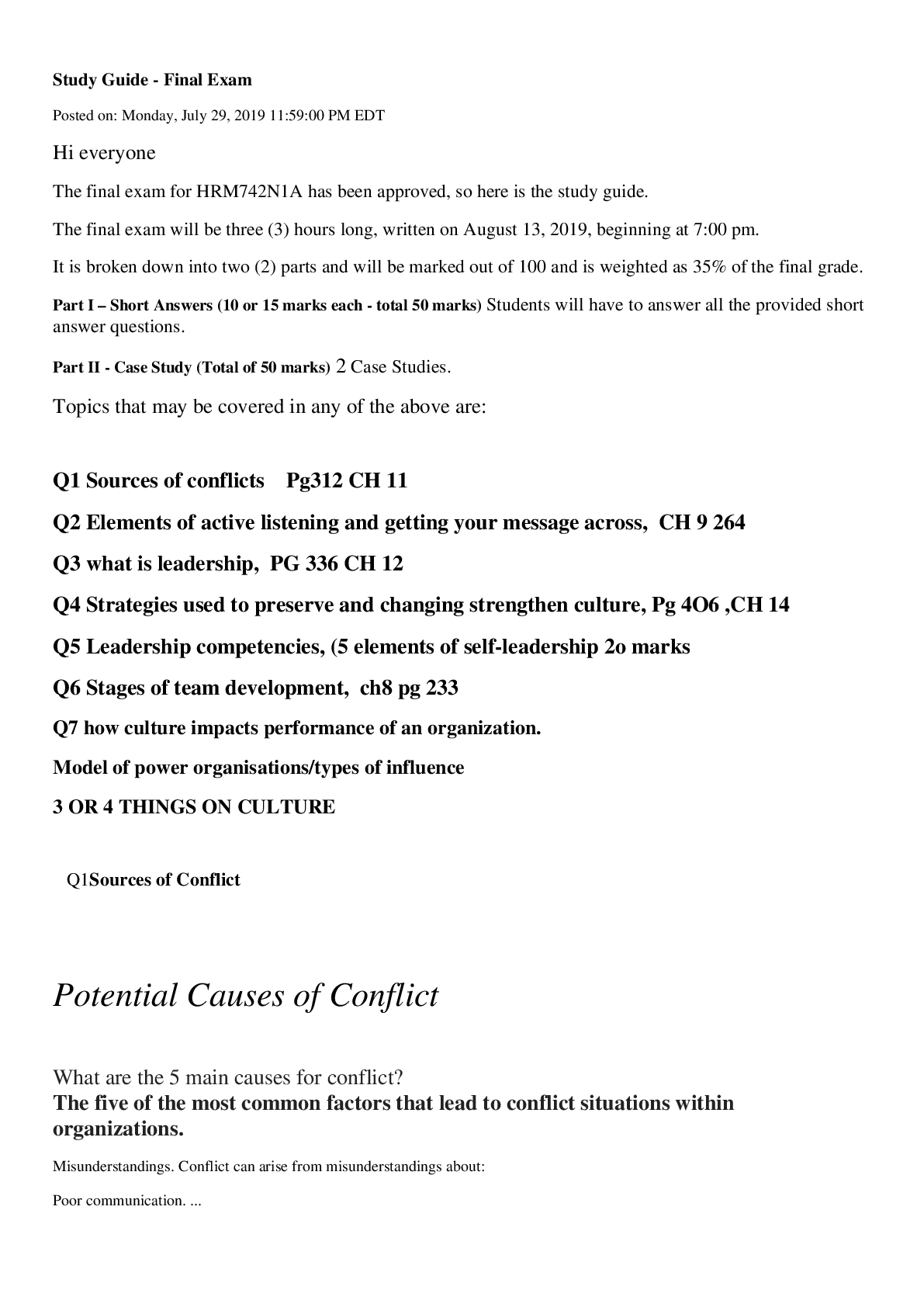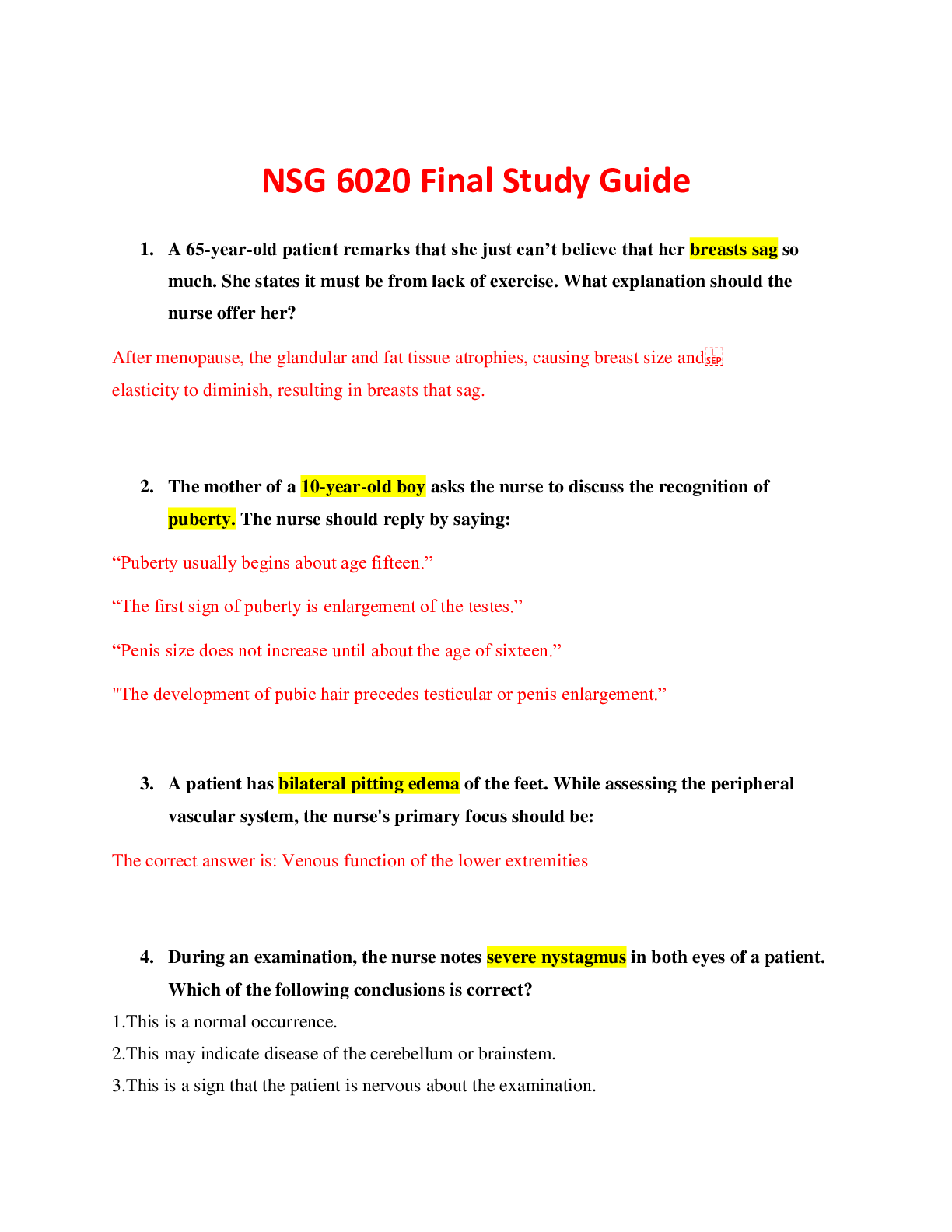BioChemistry > STUDY GUIDE > BIOCHEM C785 Kaleys Comprehensive Final Study Guide. A+ RATED (All)
BIOCHEM C785 Kaleys Comprehensive Final Study Guide. A+ RATED
Document Content and Description Below
Biochemistry: Mod 1 DNA = phosphate + deoxyribose sugar + A/T/C/G o Contains two strands. The strands are antiparallel (opposite each other). o 5’ → 3’ 3’ ← 5’ RNA = pho... sphate + ribose sugar + A/U/C/G o Single strand, can fold back onto itself and form pairs between itself (stem‐loop). Each nucleic acid is made up of polymers (many monomers) that are called nucleotides. o Nucleotides contain one or more phosphates, a five‐carbon sugar, and a nitrogen base. o Nucleotides are always made in the 5’ to 3’ direction. o 5 is always the beginning of the strand, 3 is the end where nucleotides are added. DNA organization: DNA is wrapped around proteins called histones → nucleosome → chromaƟn fiber→ chromosomes Steps to the central dogma: o Coding DNA → template DNA → mRNA → tRNA (amino acid) o DNA → transcribed to mRNA → translated to protein o Each step is complementary (opposite) to the previous step, but if you skip a step it will be identical to the previous step. o Example 1. Coding DNA strand 5’ AAA TTT GGG CCC 3’ 2. Template DNA strand 3’ TTT AAA CCC GGG 5’ 3. mRNA 5’ AAA UUU GGG CCC 3’ 4. tRNA Lys Phe Gly Pro Pairing: o DNA: A → T o RNA: A → U DNA replication: o Because DNA is a double helix, one strand can be separated and serve as a template for synthesis of a new strand. o Semi‐conservative: each copy of DNA contains a template strand and a new strand. o Steps of replication: Page 2 of 39 o 1. The DNA must be separated, creating a replication fork. This is done by helicase. o 2. Primase attaches an RNA primer, where the replication is to start. o 3. DNA polymerase adds bases to the remaining of the strand until it reaches a stop codon. This is done in fragments, called okazaki fragments. If an error is detected, it removes the nucleotides and replaces them with correct ones, known as exonuclease. o Exonuclease removes all of the RNA primers, and DNA polymerase fills in those gaps. o DNA ligase seals the two strands forming a double helix. DNA → transcribed → mRNA → translated → protein Transcription occurs in the nucleus: o Initiation: RNA polymerase binds to a sequence of DNA called the promoter, found near the beginning of a gene. Each gene has its own promoter. Once bound, RNA polymerase separates the DNA strands, providing the single‐stranded template needed for transcription. Page 3 of 39 o Elongation: One strand of DNA, the template strand, acts as a template for RNA polymerase. As it "reads" this template one base at a time, the polymerase builds an RNA molecule out of complementary nucleotides, making a chain that grows from 5' to 3'. The RNA transcript carries the same information as the non‐template (coding) strand of DNA, but it contains the base uracil (U) instead of thymine (T). [Show More]
Last updated: 2 years ago
Preview 1 out of 40 pages

Buy this document to get the full access instantly
Instant Download Access after purchase
Buy NowInstant download
We Accept:

Reviews( 0 )
$20.00
Can't find what you want? Try our AI powered Search
Document information
Connected school, study & course
About the document
Uploaded On
Feb 08, 2021
Number of pages
40
Written in
Additional information
This document has been written for:
Uploaded
Feb 08, 2021
Downloads
0
Views
85


























